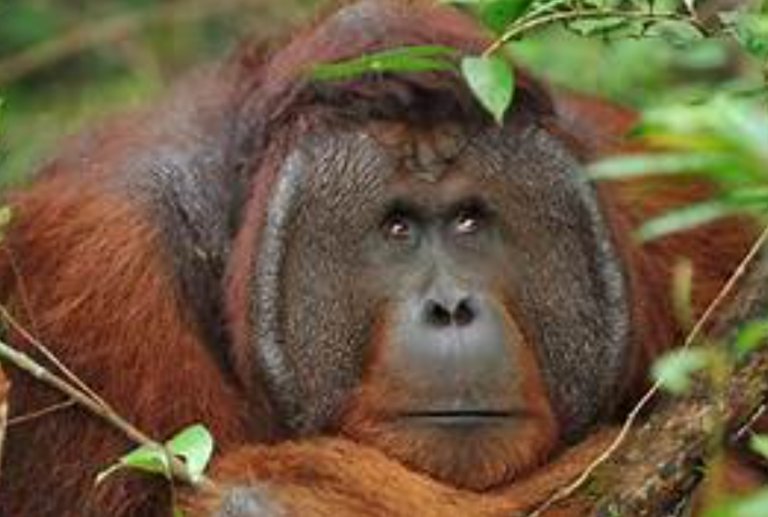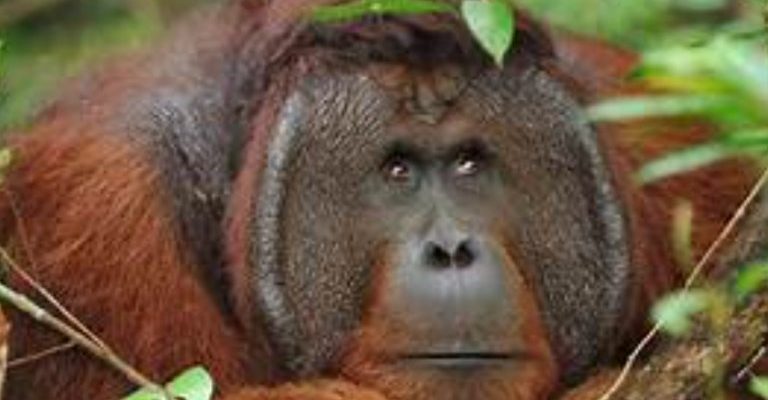
Let’s grab a cup of coffee and dive into the world of the Bornean orangutan. Imagine living among a sea of green, scaling trees that tower over you while munching on tasty fruits. These great apes lead a life that’s both astonishing and challenging, and they hold many secrets worth exploring. So, if you’re keen on learning about some remarkable facts that celebrate their uniqueness, stick around—there’s plenty to discover!
1. Unique Species Status
The Bornean orangutan is one of three distinct species of orangutans. It’s not just a random classification; they are officially recognized as their own species due to their unique characteristics and genetic makeup. Scientists estimate that Bornean orangutans diverged from their Sumatran relatives roughly 400,000 years ago. Honestly, that’s quite a bit of time for evolution to work its magic!
What sets the Bornean orangutan apart? They typically have a stockier build compared to their Sumatran cousins, with broader faces and darker fur. As they navigate their forest homes, they’ve developed extraordinary adaptations, like long arms that allow them to swing with ease between branches. Here’s the thing: their adaptations are not just cool—they are vital for their survival in the wild.
2. Masters of Tree Climbing
You might be wondering how these gentle giants get around their treetop habitat. Bornean orangutans are incredible climbers! With their long limbs and powerful grasp, they can ascend tall trees with ease. Imagine if you were built to live high up—everything you needed was at your fingertips, literally!
These great apes spend the majority of their lives in trees, foraging for delicious fruits, leaves, and flowers. They’re mostly solitary creatures, but they aren’t shy about showing off their climbing skills. When they feel threatened or need to travel between different parts of their territory, they’ll expertly navigate the canopy like they own the place. It’s a sight to behold!
3. Tool Use and Intelligence
Did you know that Bornean orangutans are one of the most intelligent primates? They have the unique ability to use tools in their daily lives. For instance, they might use sticks to extract insects from tree bark or even fashion leaves into sponges to soak up water. It’s like watching a toddler discover the world—each tool use is a step toward mastering their environment.
This intelligence is essential for their survival, as they have to figure out how to access food or make safe nests at night. They can spend hours observing their surroundings and understanding how to utilize various resources. It’s this cleverness that makes them fascinating to researchers and animal lovers alike.
4. Communication Styles
Communication is a big part of how Bornean orangutans interact with one another. They have developed a range of vocalizations and gestures to express their needs and emotions. From loud calls that can travel over long distances to subtle body language, these great apes are masters of social cues.
When a mother orangutan is communicating with her young, she’ll use specific sounds to guide them. The infant’s ability to mimic her calls can be seen as a form of learning, showcasing their bond. Importantly, these communication skills are crucial for both social interaction and survival in their densely wooded environment.
5. A Diet of Diversity
Bornean orangutans lead a frugivorous lifestyle, meaning they primarily feast on fruits. However, their diet is surprisingly diverse. In addition to fruit, they also munch on leaves, flowers, and even bark when the mood strikes. You could think of them as nature’s gourmet: they know how to select the ripest and tastiest options available.
Did you know that they play a significant role in seed dispersal? As they munch on various fruits, they help distribute seeds throughout the forest, promoting plant growth. This relationship between orangutans and their environment is a beautiful example of how interconnected nature can be.
6. Mother-Child Bonding
Orangutan mothers are devoted and nurturing. After a long gestation period of about 8.5 months, a mother gives birth to a single infant. That’s right—just one at a time. The bond they share is incredibly close, and the young orangutan will stay with their mother for several years, often up to seven or even eight!
During this time, the mother teaches her child everything they need to know about survival—from foraging for food to crafting a safe nest to sleep in. This nurturing behavior reflects the deep emotional intelligence orangutans possess, adding a heartwarming layer to their fascinating lives.
7. The Importance of Habitat
Bornean orangutans are critically endangered, and a significant part of that threat comes from habitat destruction. As humans expand agriculture, logging, and mining activities in Borneo, the lush forests that orangutans call home are rapidly disappearing. It’s hard to watch such majestic beings losing their homes, isn’t it?
Preserving their habitat is crucial not just for their survival but for the entire ecosystem. Forests are complex systems that support a variety of species, and when we protect orangutan habitats, we help maintain the balance of the environment. Conservation efforts are vital, and every small action counts.
8. Social Structure and Solitary Living
You might think that all primates live in large social groups, but the Bornean orangutan takes a different approach. Generally, they are solitary animals, preferring the peace of their own company. Adult males usually roam alone, while females may be seen with their young.
This solitary nature allows them to minimize competition for resources, which can be tough in their forest homes. However, they do interact with one another during mating season, showcasing a more social side. This unique social structure is one of the many things that make their behavior so intriguing to observe.
9. Conservation Efforts and Challenges
With their numbers dwindling due to habitat loss and poaching, conservation efforts are ramping up. Organizations are working to protect their habitats through legal measures, reforestation projects, and education programs. Here’s the kicker: while these efforts are essential, they can be challenging to implement and maintain.
Despite the obstacles, there’s hope. Recent initiatives have shown promise in restoring degraded environments and creating wildlife corridors, allowing orangutans to navigate their habitats without danger. Raising awareness about their plight can also mobilize support for these efforts, showing that every little bit counts in conservation.
10. Cultural Significance
The Bornean orangutan holds a unique place in the culture of the local people. They are often featured in folklore, symbolizing strength and wisdom. This cultural significance can play a vital role in conservation, as traditional beliefs can encourage protection of their natural habitats.
Moreover, eco-tourism centered around orangutan sanctuaries raises awareness and funds necessary for conservation efforts. When people come to see these amazing creatures firsthand, they often leave with a newfound respect for nature and a desire to protect it.
In conclusion, the Bornean orangutan is not just a creature to marvel at; it’s a symbol of the intricate web of life that we share this planet with. These fascinating facts highlight their complexity and the urgent need to ensure their future. So, as you sip your coffee and ponder the wonders of the world, remember the incredible Bornean orangutan and what we can do to keep their legacy alive.

